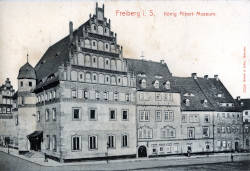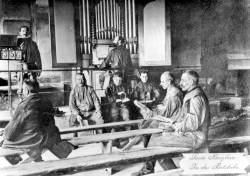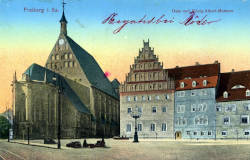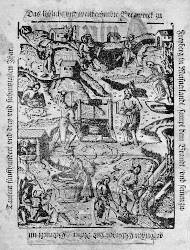Stadt- und Bergbaumuseum Freiberg
Useful Information


| Location: |
Am Dom 1, 09599 Freiberg
(50.920482, 13.344057) |
| Open: |
All year Tue-Sun 10-17, last admission 16:30. Closed 24-DEC, 01-JAN. [2021] |
| Fee: |
Adults EUR 5, Children (17-18) EUR 3.50, Trainees EUR 3.50, Students EUR 3.50, Photo Permit EUR 2, Audioguide EUR 2. Groups (12+): Adults EUR 4. [2021] |
| Classification: |
 Mining Museums Mining Museums
|
| Light: |
 Electric Light Electric Light
|
| Dimension: | |
| Guided tours: | Audio guide, guide folders |
| Photography: | with photo permission. |
| Accessibility: | no |
| Bibliography: | |
| Address: |
Stadt- und Bergbaumuseum Freiberg, Am Dom 1, 09599 Freiberg, Tel: +49-3731-20250.
E-mail: |
| As far as we know this information was accurate when it was published (see years in brackets), but may have changed since then. Please check rates and details directly with the companies in question if you need more recent info. |
|
History
| 1485 | Domherrenhof (residence of the cathedral clergy) built. |
| 1537 | used as a Latin school. |
| 1860 | Altertumsverein (Antiquities Society) founded by history-conscious citizens under the leadership of Heinrich Gerlach, owner of a book printing company. |
| 1861 | Museum founded by the Freiberg Altertumsverein in the Kastenstube of the municipal department store on Obermarkt. |
| 1903 | Moved to the newly renovated present museum building. |
| 1926 | Museum redesigned, collections scientifically structured. |
| 1939 | Museum transferred to municipal ownership for financial reasons. |
| World War II | Museum collection stored in bunker. |
| 24-NOV-1946 | Museum reopened. |
| 1990 | Complete renovation. |
Description


The Stadt- und Bergbaumuseum Freiberg (City and Mining Museum Freiberg) was founded in 1861 by the Freiberg Antiquities Society, making it one of the oldest civic museums in Saxony. It is located in the most beautiful late Gothic secular building in the city of Freiberg, the former Domherrenhof. It has a large collection on the city’s history, late Gothic sacred art from Upper Saxony, and masterpieces of mining art. Highlights include paintings by Lucas Cranach the Younger, the oldest Schwibbogen (candle arch) in the world, unique goldsmith’s art and the oldest mining carvings in Saxony.
The building was constructed as the residence of the clergy of St. Mary’s Church, which was raised to the rank of a collegiate foundation in 1480 and is now the cathedral. Hence the name Domherrenhof, the dean lived here with his vicars and chaplains. After the Lutheran Reformation, the collegiate monastery was dissolved. In 1542, the town made the building available to the Latin School; it served both as a school and as a residence for the rector, other teachers and needy pupils. The Latin school was converted into a grammar school and finally moved to a newly constructed school building in 1875. The building was now used as a warehouse, as the headquarters of the Hoppe woollen goods factory, but also as living quarters. Finally, it was thoroughly renovated and housed the museum from 1903, at that time under the name King Albert Museum. It was renamed the City and Mining Museum after it was completely transferred to municipal ownership in 1939. But during the Second World War, a part of the collections was moved out and the Wehrmacht stored supplies for medical units towards the end of the war. After the war, the building was briefly used as a warehouse by the Soviet occupation forces, but the museum was reopened as early as 1946.
The Freiberg mining collection is located on the second floor and includes important artefacts such as mallets and irons. There is also a collection of historical lamps and tools. Highlights are the reconstructions of a wooden reel and a wooden ore sledge or hunt. There is also the reconstruction of a Betstube (prayer hall), a sort of chapel were miners could pray before work. The collection is completed by historical photos and texts.
 Search DuckDuckGo for "Stadt- und Bergbaumuseum Freiberg"
Search DuckDuckGo for "Stadt- und Bergbaumuseum Freiberg" Google Earth Placemark
Google Earth Placemark Stadt- und Bergbaumuseum Freiberg
Stadt- und Bergbaumuseum Freiberg  - Wikipedia (visited: 07-MAY-2021)
- Wikipedia (visited: 07-MAY-2021) Stadt- und Bergbaumuseum Freiberg, official website
Stadt- und Bergbaumuseum Freiberg, official website  Index
Index Topics
Topics Hierarchical
Hierarchical Countries
Countries Maps
Maps